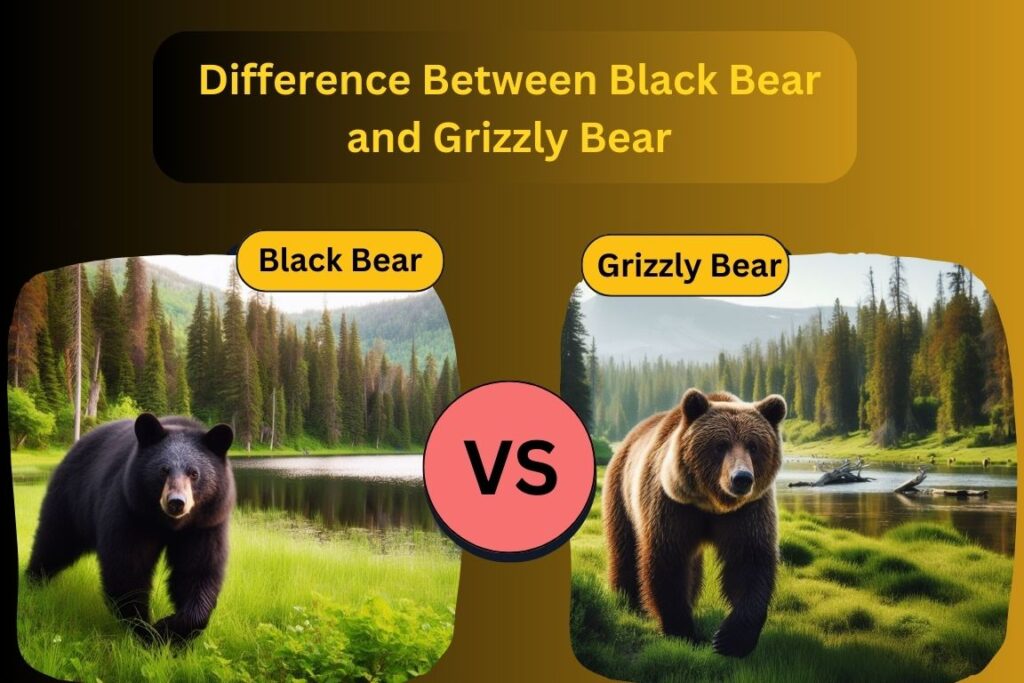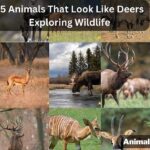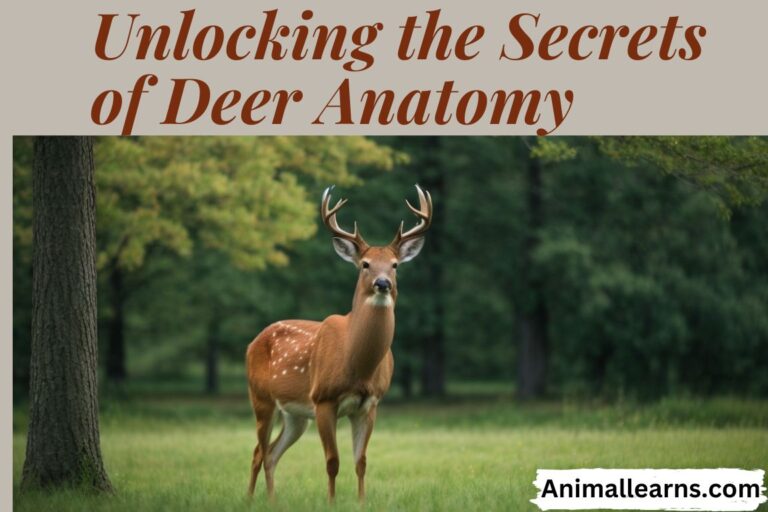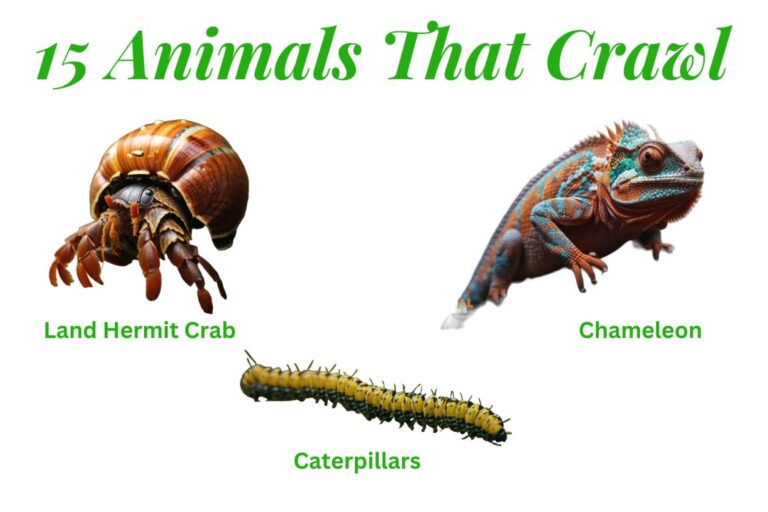Exploring Black Bears Population and Social System

The American black bear is the smallest and most widely distributed species of bear in North America. The Black Bears population exhibits a remarkable ability to thrive in diverse environments while maintaining amicable interactions with other bears and animals. They are known for their shiny black fur, but they can also have brown, cinnamon, or even white fur.
Black bears are omnivores and their diet consists of both plants and animals. They are opportunistic feeders and will eat whatever is available in their habitat.
Black bears are excellent climbers and can climb trees to escape predators or to find food. They are also known for their hibernation habits, where they can sleep for up to 7 months without eating or drinking.
Black bears are generally not aggressive towards humans, but it’s important to keep a safe distance from them if you encounter one in the wild.
Populations And Their Social Systems
Contents
Black Bears Population
Black Bears Population by State
The black bears’ population varies significantly “by state” across North America. States like “Florida,” “Michigan,” “Missouri,” and “Wisconsin” are known for their thriving black bear populations, providing ample opportunities for wildlife enthusiasts and researchers to study these creatures in their natural habitats.
The diversity of “state” populations, from “BC” in Canada to “Tennessee” in the United States, and “Ontario” in Canada to “Washington” and “Virginia,” highlights the adaptability of black bears to different regions.
Range and Distribution:
Black bears (Ursus americanus) are widely distributed in North America. Their range extends from the southern United States through Canada to Alaska. Various subspecies exist, adapting to different environments.
Population Estimates:
The estimated black bear population in North America ranges from 600,000 to 800,000 individuals. Population numbers can vary significantly by region, habitat quality, and available food resources.
Habitat Adaptability:
Black bears are highly adaptable and can thrive in diverse habitats, including forests, swamps, grasslands, and mountainous regions. Their choice of habitat often depends on food availability and seasonal changes.
Black Bear Social Systems:
Solitary Nature:
Black bears are typically solitary animals, with adult males being particularly solitary. They have overlapping home ranges but do not form long-lasting social groups.
Family Groups:
Female black bears may be accompanied by their cubs, forming small family groups. Cubs stay with their mother for about 1.5 to 2 years, during which they learn essential survival skills.
Temporary Associations:
Bears may tolerate the presence of other bears in locations with plenty of food, which can result in brief gatherings near food sources. These get-togethers are frequently brief and may not reflect enduring social ties.
Territorial Behavior:
Black bears are known for their territorial tendencies, especially when it comes to good food supplies. Dominant people may use vocalizations, posture, and even physical conflict to establish their control.
Communication:
The Black Bears population is affected by various forms of communication, including vocalizations (roaring, growling), body language (posturing), and scent marking. Scent marking helps establish and communicate territory by rubbing trees or leaving scent marks on the ground.
Predators

The gentle giants of the animal realm are black bears. They are a force to be reckoned with due to their enormous size, strength, and climbing prowess. Their tiny pups, however, are more prone to being eaten by stronger predators like wolves, mountain lions, and occasionally other bears, even adult males trying to drive out possible rivals.
Unfortunately, humans pose the most significant threat to black bear populations through hunting and habitat destruction. It is essential to protect these iconic animals and maintain ecological balance in their habitats.
Conservation efforts are the need of the hour to ensure that these majestic creatures continue to thrive in the wild.
Mating
Black bears are fascinating creatures, and their mating behavior is no exception. Here’s a brief overview of black bear mating:
- Mating Season: Black bears often breed in the late spring or early summer, depending on where they live and the surrounding habitat. From May through July, mating can take place in some areas.
- Reproductive Age: Reproductive Age: Female black bears attain sexual maturity between the ages of 3 and 5 whereas males typically do so between the ages of 5 and 7.
- Courtship and Mating Behavior: Female bears release pheromones that draw nearby male bears when they are in estrus, or a state where they are open to mating. Circling, vocalizations, and even play-fighting are all courtship actions. Males make low-pitched groans and roars during mating, which may be fairly noisy.
- Delayed Implantation: Delayed implantation” is one distinctive feature of black bear reproduction. The fertilized egg does not instantly implant in the female’s uterus after fertilization. Instead, it spends many months in a dormant state, enabling the female to schedule the birth of her cubs for ideal circumstances—often in the late winter during hibernation.
- Gestation and Birth: The gestation phase lasts around 220 days (or 7.5 months) after the fertilized egg implants and starts to develop. Usually in January or February, when the mother is hibernating in the den, cubs are born. Typically, a litter has one to three cubs.
- Maternal Care: Black bear moms are watchful and devoted to their cubs. During the first year of their lives, they breastfeed and tend to their cubs. For around 1.5 to 2 years, cubs stay with their mother and acquire crucial survival skills like foraging and evading predators.
Challenges Faced
Black bears have a difficult time surviving. Urbanization and deforestation, which are destroying their habitats at an alarming rate, are driving them to live closer to people, increasing conflict. Significant risks include unlawful hunting and poaching, which result in some people being killed for their body parts or out of terror.
The problem is being made worse by climate change, which is upsetting their natural habitats and food sources and making it more difficult for them to get enough food. Not to be overlooked is the effect of road mortality on black bears, since many of these animals pass away every year in collisions with automobiles.
Despite these challenges, the Black Bears population is incredibly resilient and adaptable. However, our collaborative efforts to safeguard their habitats, lessen human-bear confrontations, and uphold laws against unlawful hunting are what will ultimately determine whether they live or die. Together, we can make sure that there is a healthy natural population of these lovely animals.
Comparing Black Bears to Other Species
Black bears are fascinating mammal that are different from other bears in many ways. They are smaller and more peaceful than their big and fierce relatives like grizzly and polar bears.
Additionally, in addition to black, they can also be brown and occasionally even white. Their varied diet, which includes not just meat like grizzlies but also vegetables, berries, insects, and more, is another characteristic that sets them apart.
Black bears can live everywhere and get along with other bears and animals. They are also incredibly adaptable and kind. These variations highlight how unique black bears are and how they can adapt to various settings.
Black Bears vs. Brown Bears

The emblematic bears of North America are the black bear and the brown bear. Despite the fact that both species are widespread, there are clear distinctions between them in terms of how dangerous they could be to people. Black bears are often less hostile and more sociable toward humans, making most interactions with them less perilous.
The Black Bears population and Brown Bears population are both subject to conservation efforts and monitoring to ensure the well-being of these iconic bear species.
| Characteristic | Black Bears (Ursus americanus) | Brown Bears (Ursus arctos) |
| Color | Black, but can be brown or cinnamon | Brown, often with variations such as grizzled or blonde |
| Range | North America, including Canada and the United States | Various regions, including North America (Grizzly), Europe, Asia, and Russia |
| Size | Smaller; males weigh 150-600 pounds (68-272 kg), females weigh 90-275 pounds (41-125 kg) | Larger; males weigh 400-1,500 pounds (181-680 kg), females weigh 300-700 pounds (136-318 kg) |
| Hump on Back | Absent | Present in many, especially Grizzly bears |
| Shoulder Hump Size | Small, if present | Prominent and muscular |
| Diet | Omnivorous, but primarily herbivorous | Omnivorous with more emphasis on animal matter |
| Behavior | Generally less aggressive | Can be more aggressive, especially when protecting cubs or food |
| Habitat | Varied, including forests, swamps, and mountainous regions | Wide range of habitats, including forests, tundra, and coastal areas |
| Reproduction | Typically give birth to 1-3 cubs in January-February | Usually give birth to 1-3 cubs in late winter or early spring |
| Lifespan | 20-30 years in the wild | 20-30 years in the wild (longer for polar bears) |
Black Bears vs. Grizzly Bears

Grizzly bears and black bears can be challenging to distinguish from each other due to similarities in size and coloration. Grizzlies may have a range of coat colors, from blonde to black, while black bears can exhibit various colors, including cinnamon, brown, and blonde.
It’s crucial to recognize the fundamental distinctions between these two bear species, especially in areas where they cohabit, because they resemble one another in size and color.
The Black Bears population and Grizzly Bears population have distinct ecological roles and habitats, with Black Bear generally found in a broader range of environments and Grizzly Bear often inhabiting more specific, rugged terrain.
| Characteristic | Grizzly Bear | Black Bear |
| Size and Color | Various coat colors, from dazzling blonde to deep brown or black | Coat colors vary, including cinnamon, brown, blonde, or a blend of colors |
| Body Size | Adult female: 200-350 pounds, Adult male: 300-650 pounds | Adult weight: 200-300 pounds, Similar height, 3-3.5 feet at the shoulder |
| Visual Characteristics | Prominent shoulder hump, concave facial profile, longer, tangled fur | No shoulder hump, straight facial profile, flatter, shorter fur |
| Ear Shape | Smaller, fuzzier ears | Larger, more upright, pointed ears with swimming effect |
| Front Claws | Longer claws (2-4 inches), slightly curved, light tint | Shorter claws (typically <2 inches), acutely curled, dark color |
| Tracks | More square-shaped front paw prints | Round front paw prints, straight edge crosses the toe on the opposite side |
Exploring the Highest Black Bear Population
Across the “North American” continent, black bears have thrived for “100 years” or more. The “Canadian” wilderness boasts some of the “highest” black bear populations in the “world,” with “Alberta,” “Ontario,” and “British Columbia” standing out.
Meanwhile, in the “US,” regions like “Alaska,” “Arkansas,” “Arizona,” and “Alabama” are home to substantial black bear populations. The “Adirondacks” in New York and the “North Carolina” wilderness also play host to these magnificent creatures, demonstrating the rich diversity of black bears population in North America.
FAQs
What are the different types of black bears?
There is one main species of black bear, Ursus americanus, but within this species, there are several subspecies, such as the Eastern Black Bear, Western Black Bear, and Florida Black Bear.
Are all black bears actually black in color?
Despite the name, black bears can come in a range of colors, including black, brown, cinnamon, and even white. The majority are black, but color variations exist.
What is the typical behavior of black bears?
Black bears are generally solitary animals, though they can be social on occasion. They are omnivores, with diets that include plants, fruits, insects, and occasionally small mammals. They are excellent climbers and swimmers, and they hibernate during the winter.
How can you differentiate between black bears and grizzly bears?
Size, behavior, and physical characteristics can help distinguish between black bears and grizzly bears. Black bears are usually smaller, have a straighter face profile, and lack the hump on their shoulders that grizzlies have.
Are black bears dangerous to humans?
Black bears are typically shy and avoid humans. However, they can be unpredictable, and encounters can turn dangerous if they feel threatened or if food is involved. It’s essential to follow bear safety guidelines when in a bear country to minimize potential risks.












